Lindsay Olson jumped at the chance to take part in an ocean acoustics science expedition and then explore the project’s science and technology concepts through her art. After three weeks on the Research Vessel ‘Endeavor’, she returned home and started to figure out how to use the collected data as inspiration for her project ‘The Art and Science of Sounds in The Sea’.
This body of work highlights the research conducted from the University of New Hampshire’s Center for Acoustics Research and Education. Her artwork is currently touring in Europe and the US in numerous science outreach exhibitions.
Lindsay’s artistic practice has developed out of her intense curiosity about science and its relationship with society. She was chosen to be the Fermi National Accelerator’s first artist in residence and also worked at CERN as part of the Art@CMS project. She Has worked with the Metropolitan Water Reclamation District of Greater Chicago, the Field Museum and the Chicago Botanic Garden. Lindsay currently teaches textiles at Columbia College Chicago.
In this article, we explore the art of incorporating scientific data into your work. Lindsay shares with us the excitement of being part of a research team working on a scientific research vessel and shows us in detail how she went on to develop her artwork for this project.
Find out how Lindsay used the soundscapes picked up by underwater hydrophones to create her heavily embroidered and beaded panels to illustrate the sounds of the ocean. And discover how she became inspired by embroidery artist Lissy Funk’s huge, densely-stitched textile art panels.
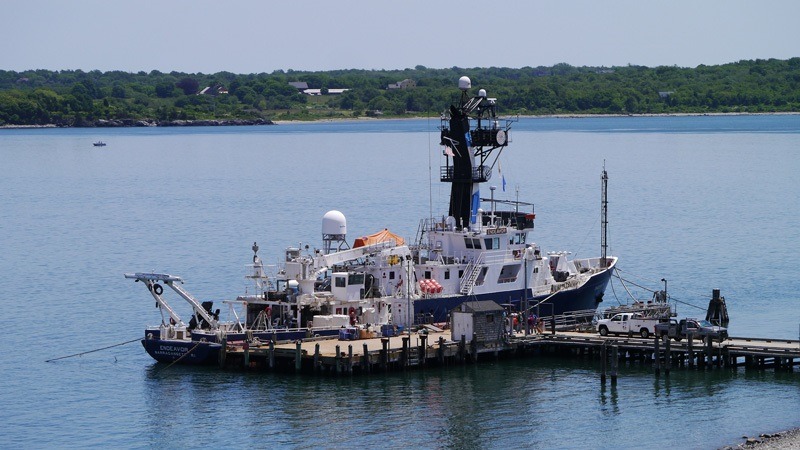
Expressing science through art
TextileArtist.org: How did the idea for the piece come about? What was your inspiration?
Lindsay Olson: I make art about science and because of this my work takes me out of the studio to some extraordinary locations! Recently I got to experience being out at sea for several weeks with scientists working around the clock to uncover the mysteries of the ocean sound-scape using acoustic analysis. And my mission was to explain their work, through my textile art.
The Atlantic Deep water Ecosystem Observatory Network (ADEON) project is run by a collaborative group of scientists collecting long-term sound data from the sea to study the U.S. Mid- and South Atlantic Outer Continental Shelf (OCS). Scientists like these are working hard to understand the effects of natural and human factors on marine resources to aid future ecosystem management and look after endangered and protected species.
It was a muggy day in June 2018. I had been at sea for two and a half weeks, accompanying the Research Vessel Endeavor’s crew and science team. We pulled in to our last study site off the coast of Virginia. The weather was warm and overcast. The sea was calm.
Project leader Dr Jennifer Miksis-Olds had just given the word to “pop the lander” and we scanned the immediate vicinity, searching for the orange floats attached to hydrophones and other data collection equipment hidden deep below the surface. The twenty-minute journey to the surface was a waiting game we had performed successfully many times before. We had to retrieve the lander, download the data and then plunge the equipment back to the deep ocean floor so it could continue to collect data.
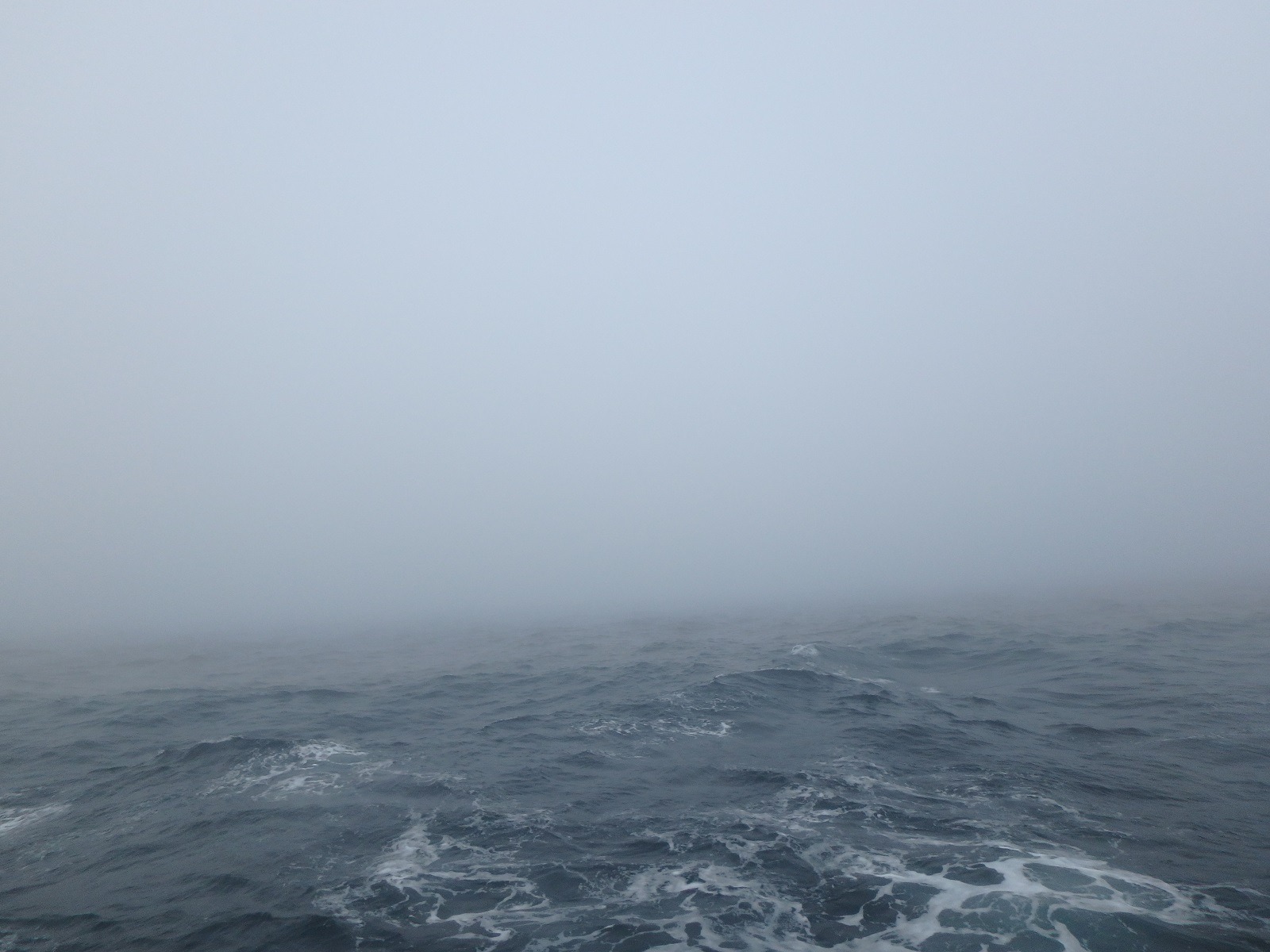
But this time, as soon as Jen gave the word to release the lander, everything suddenly changed. The wind shifted, the sea state kicked up and a heavy rain drenched us. A curtain of fog descended. Finding the equipment became a huge challenge.
This is science at sea; unpredictable, challenging, nerve-wracking and exciting!
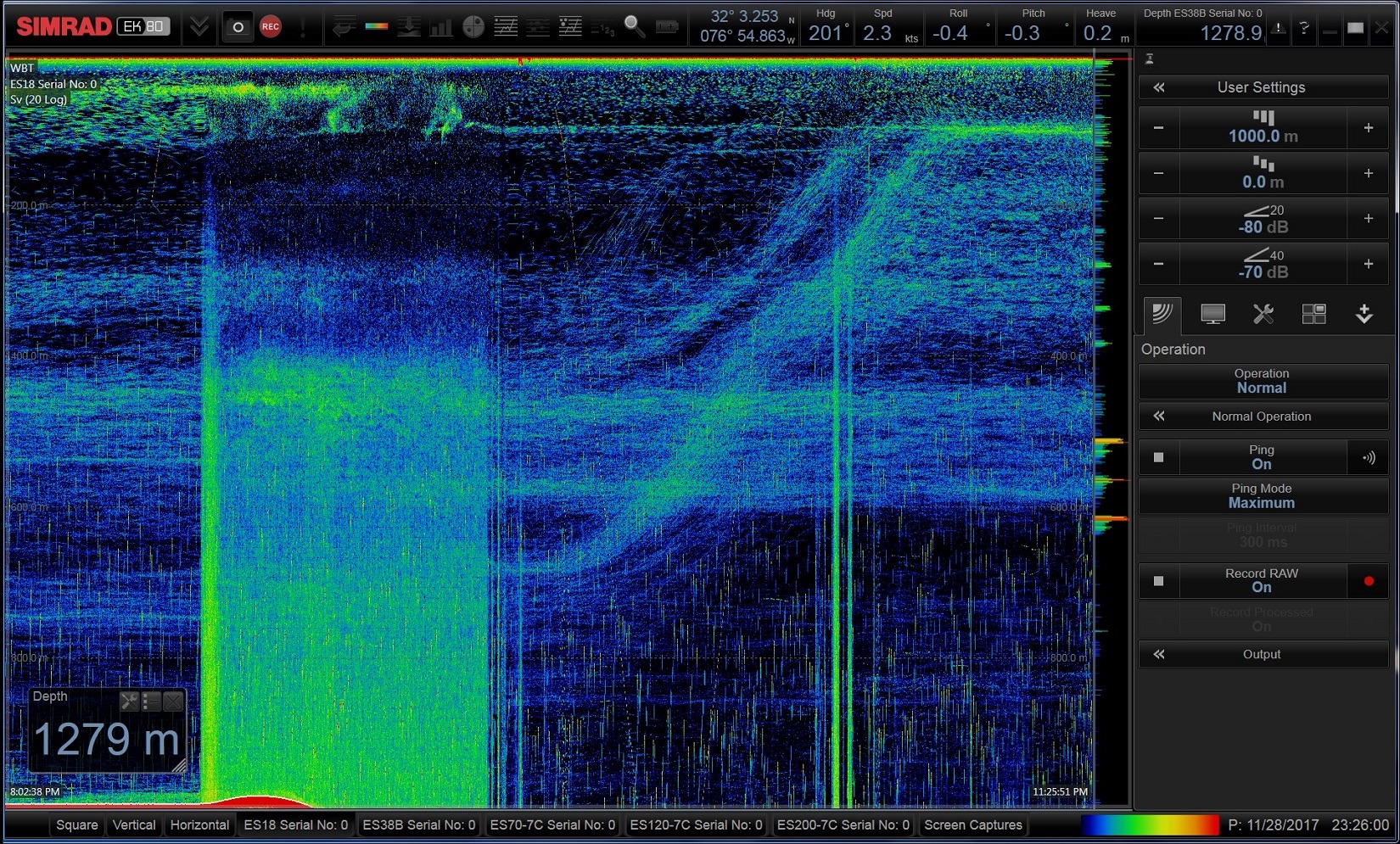
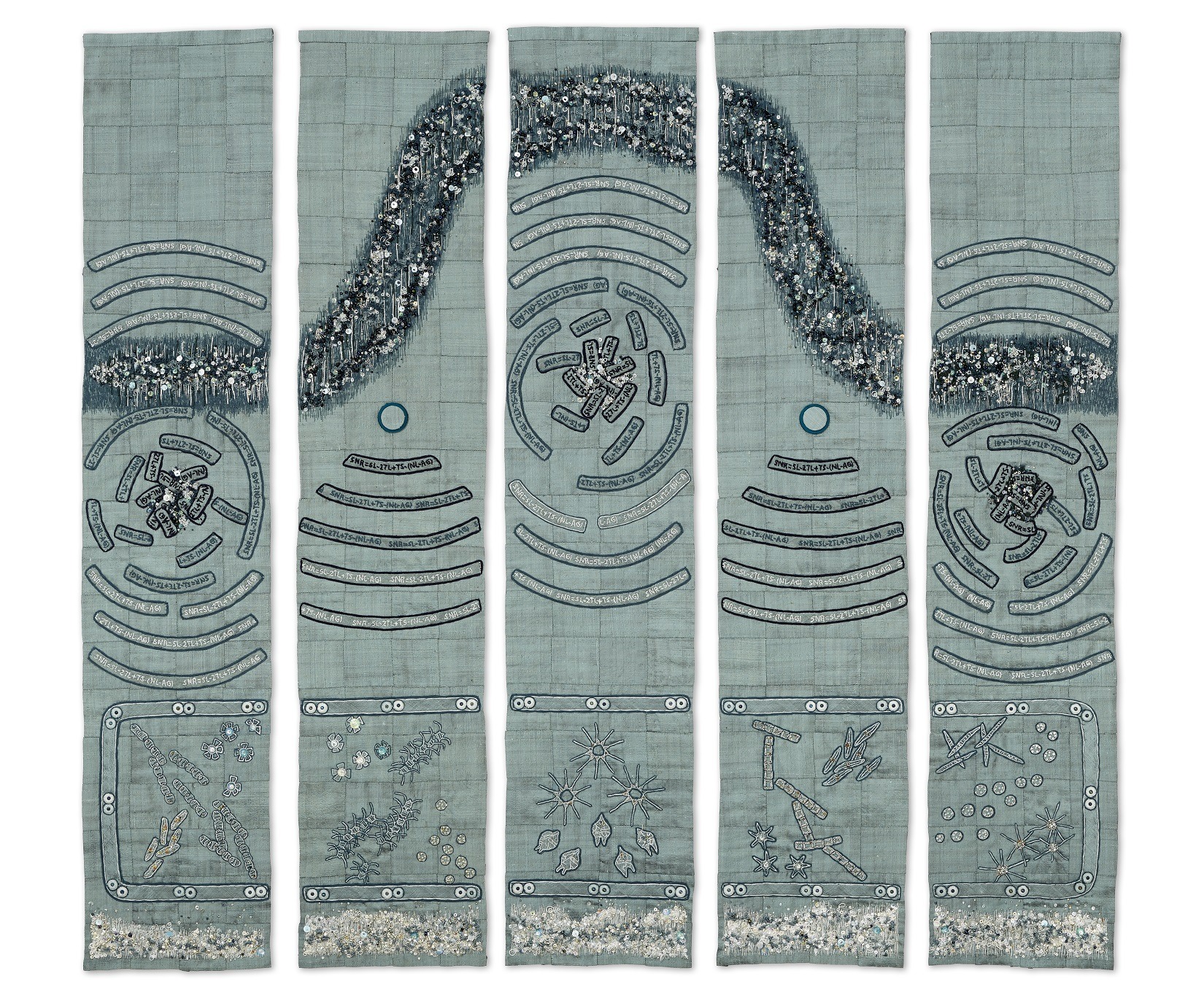
Ocean acoustics researchers use sound to study life in the ocean. I wanted to represent the collected sounds of the sea within my artwork.
For this project, I created two densely-embroidered silk panels to help describe what researchers are discovering. The works illustrate the largest daily migration of zooplankton, the naturally-occurring sound-carrying SOFAR ocean channel (SOund Fixing And Ranging channel) phytoplankton and the dramatic vocalisations of marine life. All these are studied using soundscapes gathered by underwater microphones (hydrophones).
As well as using the scientific data, I drew inspiration from the work of the Swiss embroidery artist Lissy Funk as well as the elite artists of Mayan classical period with their profound, symbolic connection to water.
To read more about the art and science of ocean acoustics, please visit my current project page. And if you’d like to hear recordings of marine sounds, including marine mammals, check out the ADEON Audio Gallery. There’s another great online resource, too, the website Discovery of Sound in The Sea, where you can find out more about ocean acoustics.
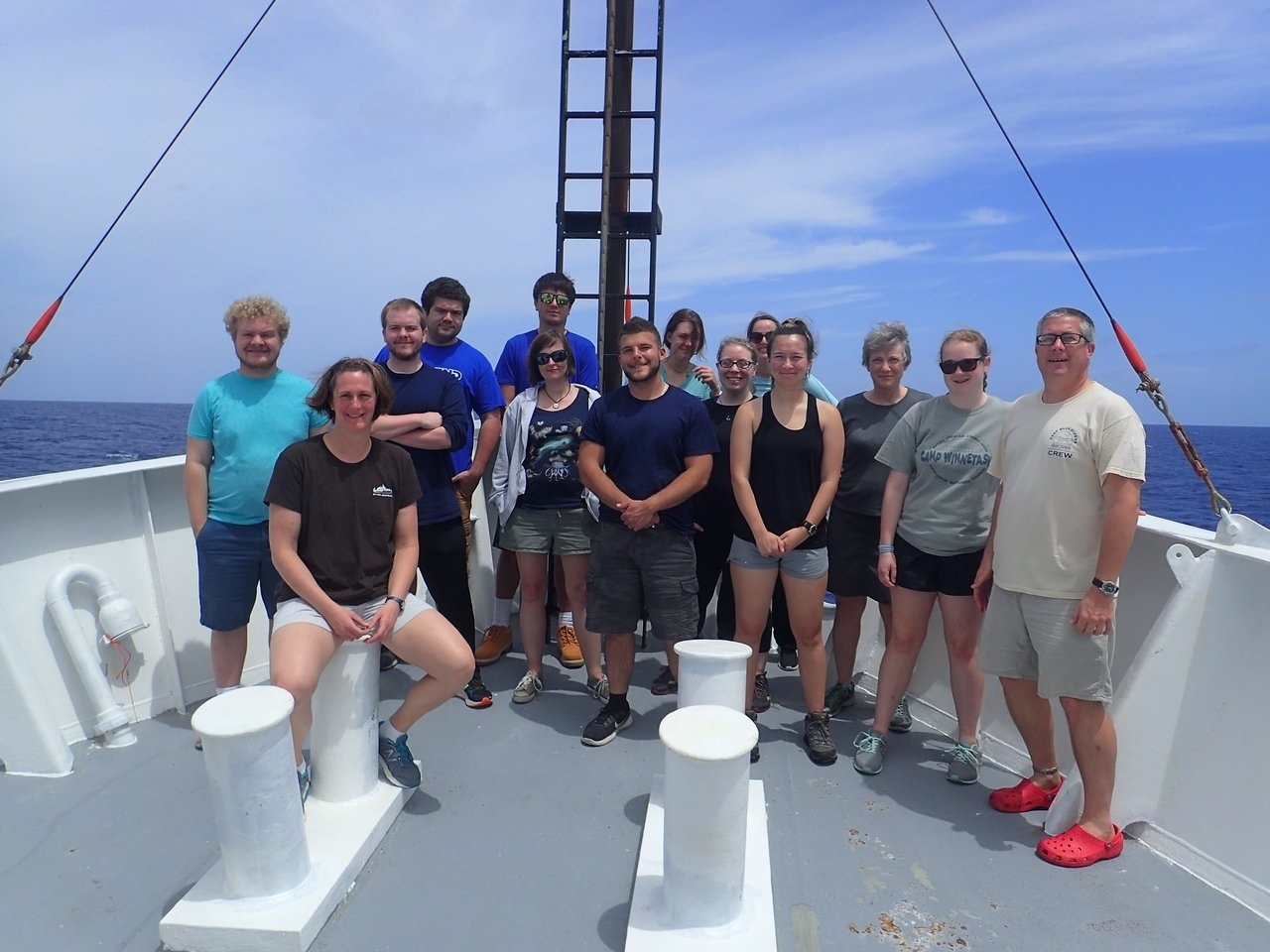
What research did you do before you started to make?
Before I left on the research trip I visited the Art Institute of Chicago and saw the work of Lissy Funk. The textile staff at the museum were kind enough to roll out her monumental-sized works so I could study them.
Funk was born in 1906 and lived in Switzerland. During her lifetime she created over a hundred works, including many large commissions for churches and city centres. Monumental embroideries like these are rare and labour-intensive to produce. Her work is even larger than the famous Bayeux tapestry created in 1066.
What attracted me was not only the ambitious size but the density of the stitched designs.
Using a fifty-stitch vocabulary, she was able to expand the expression of these stitches. She varied thickness of a basic couched thread and added padding with a type of self-styled satin stitch that she used to cover vast expanses of her heavy linen canvas pieces.
She pushed the boundaries of expression with thread and is known for inventing a stitch called the Funk Stitch, which she used to couch down unspun fibres. This formed a padding that created a more three-dimensional look to her embroideries.
Lissy Funk’s unique compositions and production techniques defy categorisation and were judged to be outside of mainstream art trends. Her work remains fresh and unique even today. To me, Lissy Funk is a Picasso-like figure due to her expressive use of materials and inventive use of stitches.
Book: [easyazon_link identifier=”0865590796″ locale=”UK” tag=”wwwtextileart-21″]“Lissy Funk: A Retrospective”
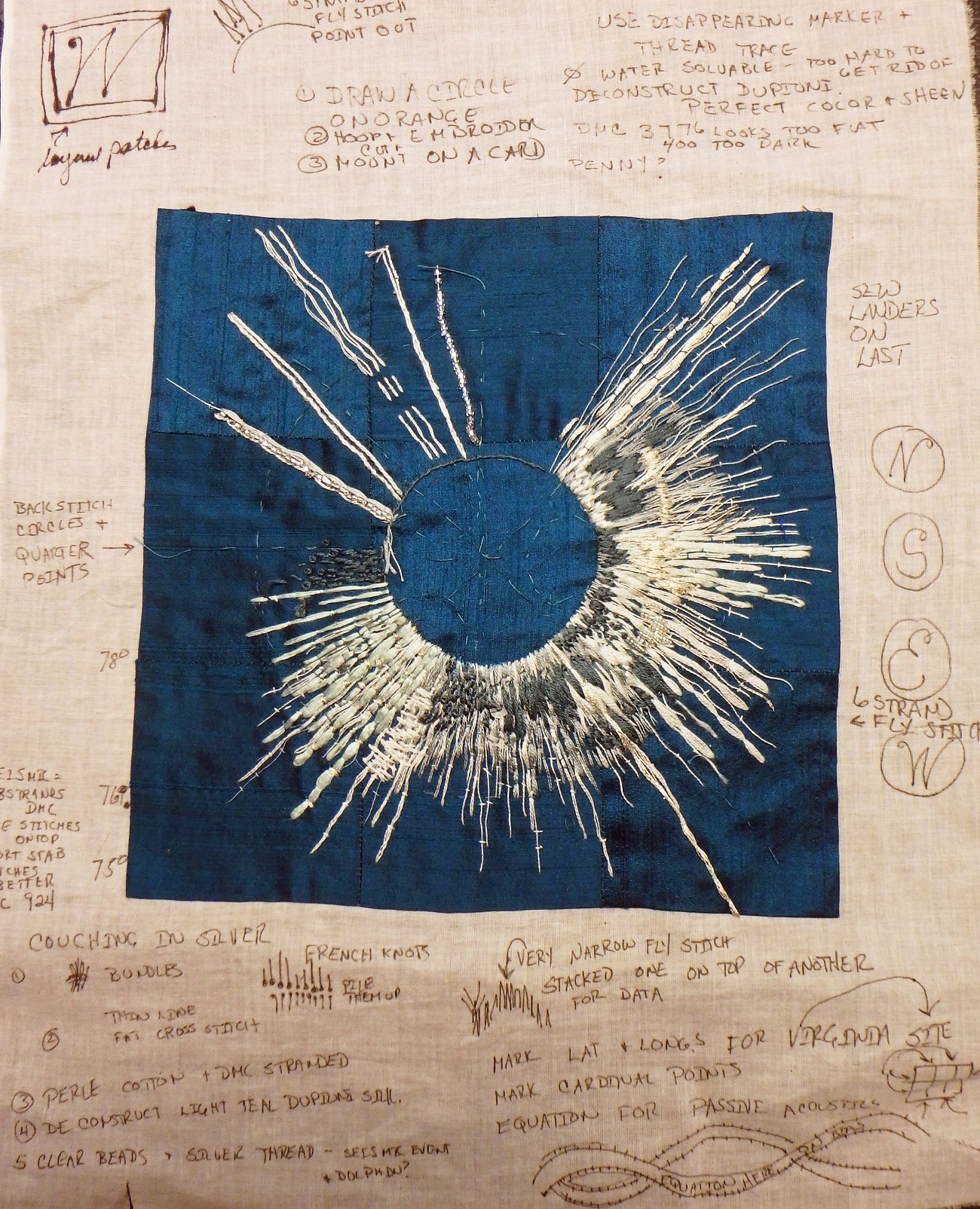
Shimmering seas of silk
What materials were used in the creation of the piece?
I knew early on that I wanted to work with a silk weave called dupioni (dupion silk). This particular silk fabric has a pronounced grain line and by shifting the gridded fabric squares of the background, the surface of the art shimmers like the light on the ocean surface.
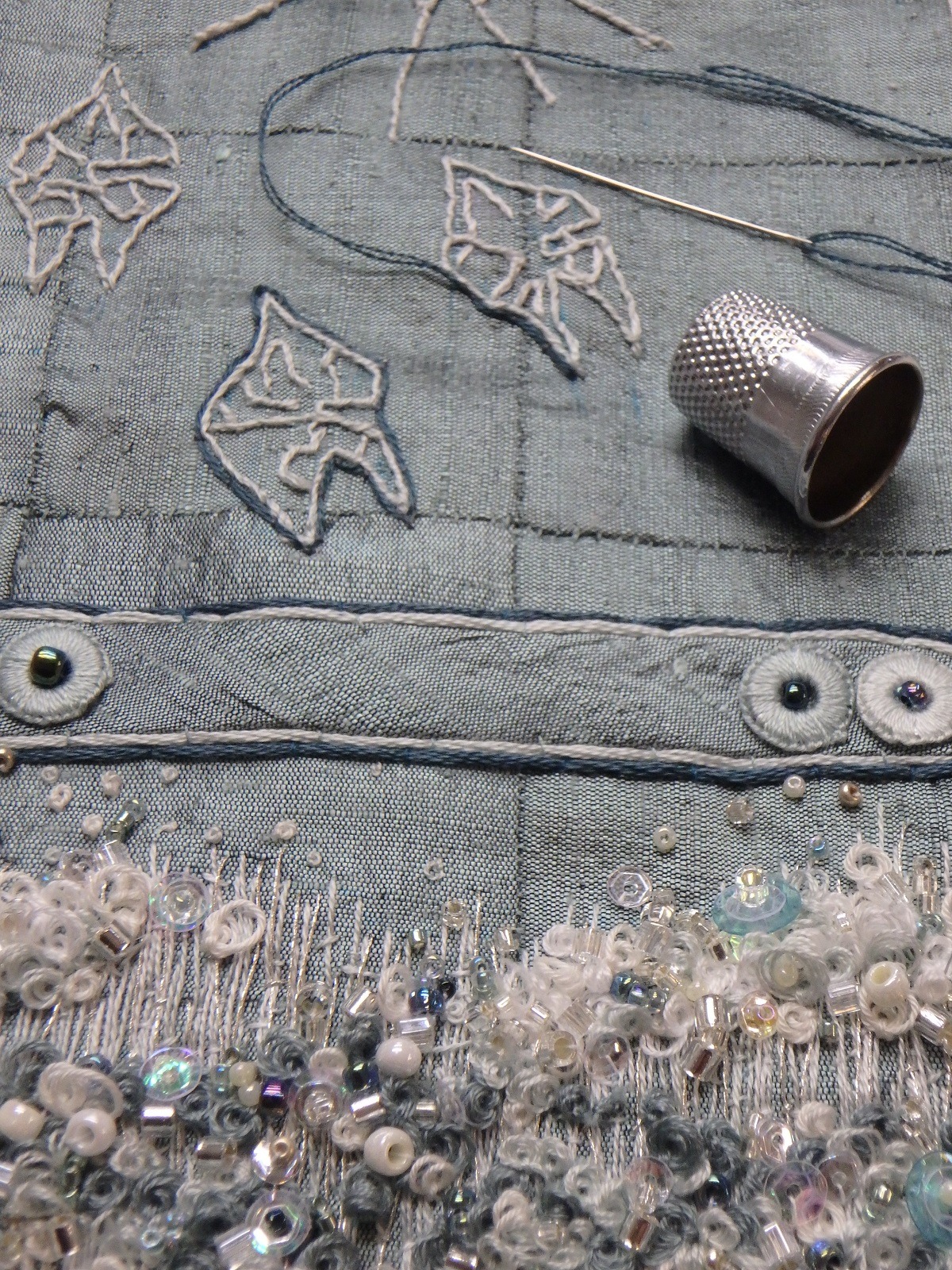
What techniques and equipment did you use in the creation of the work?
I kept the number of stitches to a minimum and using a monochromatic colour palette. This gave the pieces a pleasing visual flow.
The stitches I found most useful were couching, Romanian couching, wrapped back stitch, beading, collage and intentionally sloppy French knots! I used DMC threads and beads that echoed my monochromatic theme. I also painted sheets of acetate with acrylic paint and used a hole-punch to create my own custom-coloured sequins.
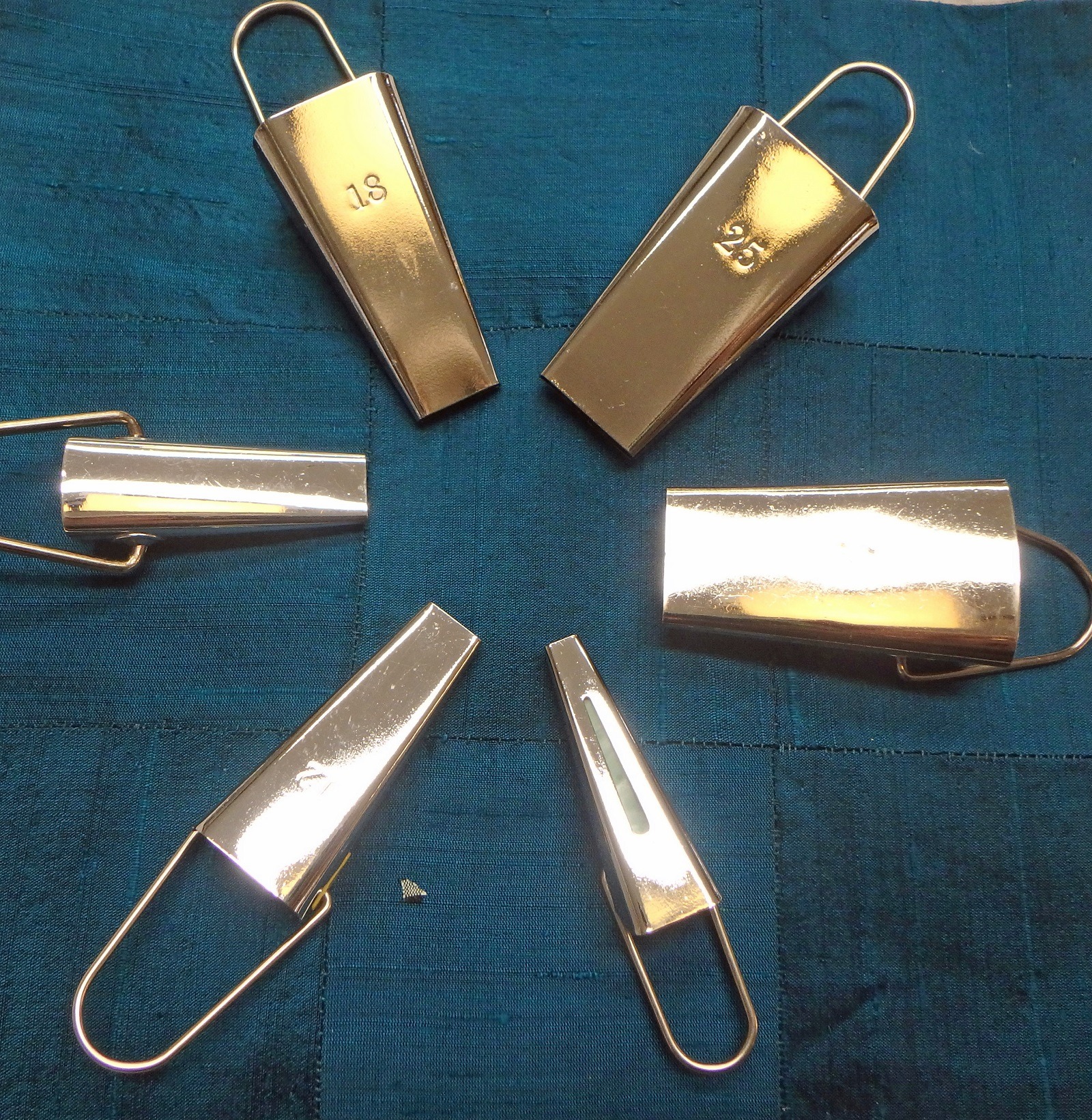

I used embroidered bias tape to illustrate a few equations, such as the chemical formulae used to measure ocean acidification, sonar equations and wave equations. To make these bespoke bias strips, I used a bias maker that comes in a variety of sizes.
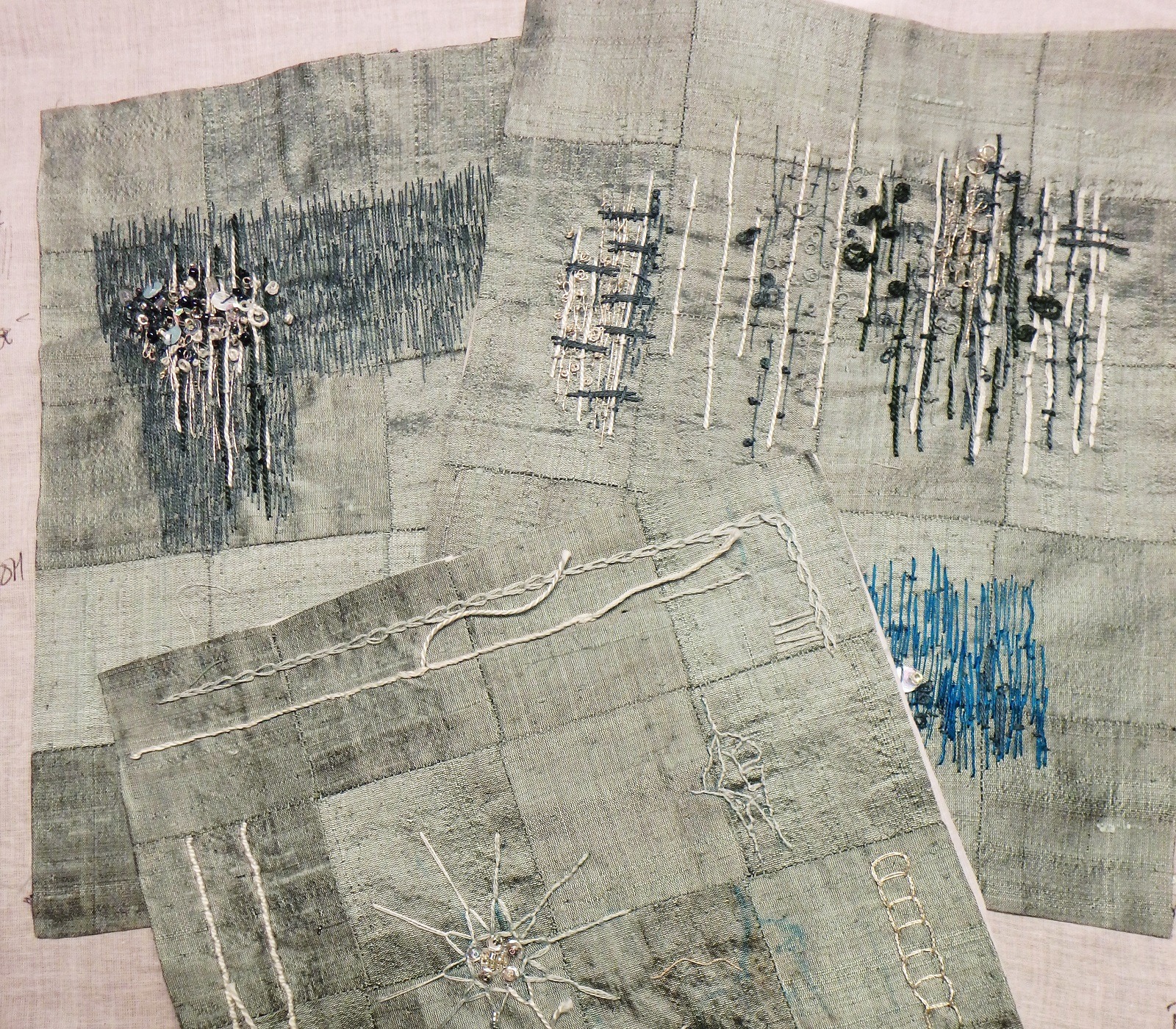
The benefits of sampling
Take us through the creation of the piece?
I started by creating small samples. They are a great way to research colours, stitches, proportions and overall design.
Sometimes these samples led to dead ends. Other times my samples had to be modified as I scaled up the designs. The sampling process also helped me gain lots of experience with materials and stitches before starting on the final artwork.
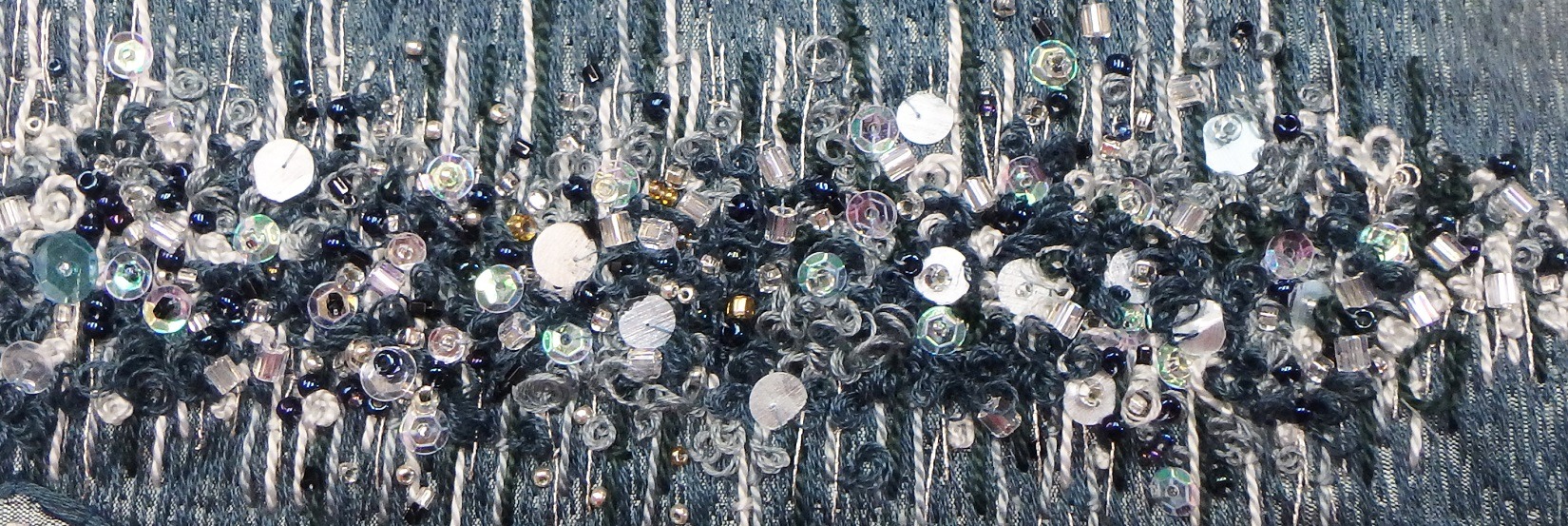
Historically, heavily embroidered and beaded clothing would have been created as a sumptuous sign of status amongst royalty and the wealthy. By using these labour-intensive processes, I was trying to create a visual link that helps to elevate the status of the science content that I’m illustrating.
I also want my art to stand on its own, independent of the science concepts expressed in the work. Even if a viewer has no interest in the science, I want them to be able to appreciate beautiful materials, the use of design principals and the timeless quality of exuberant handcrafted labour.
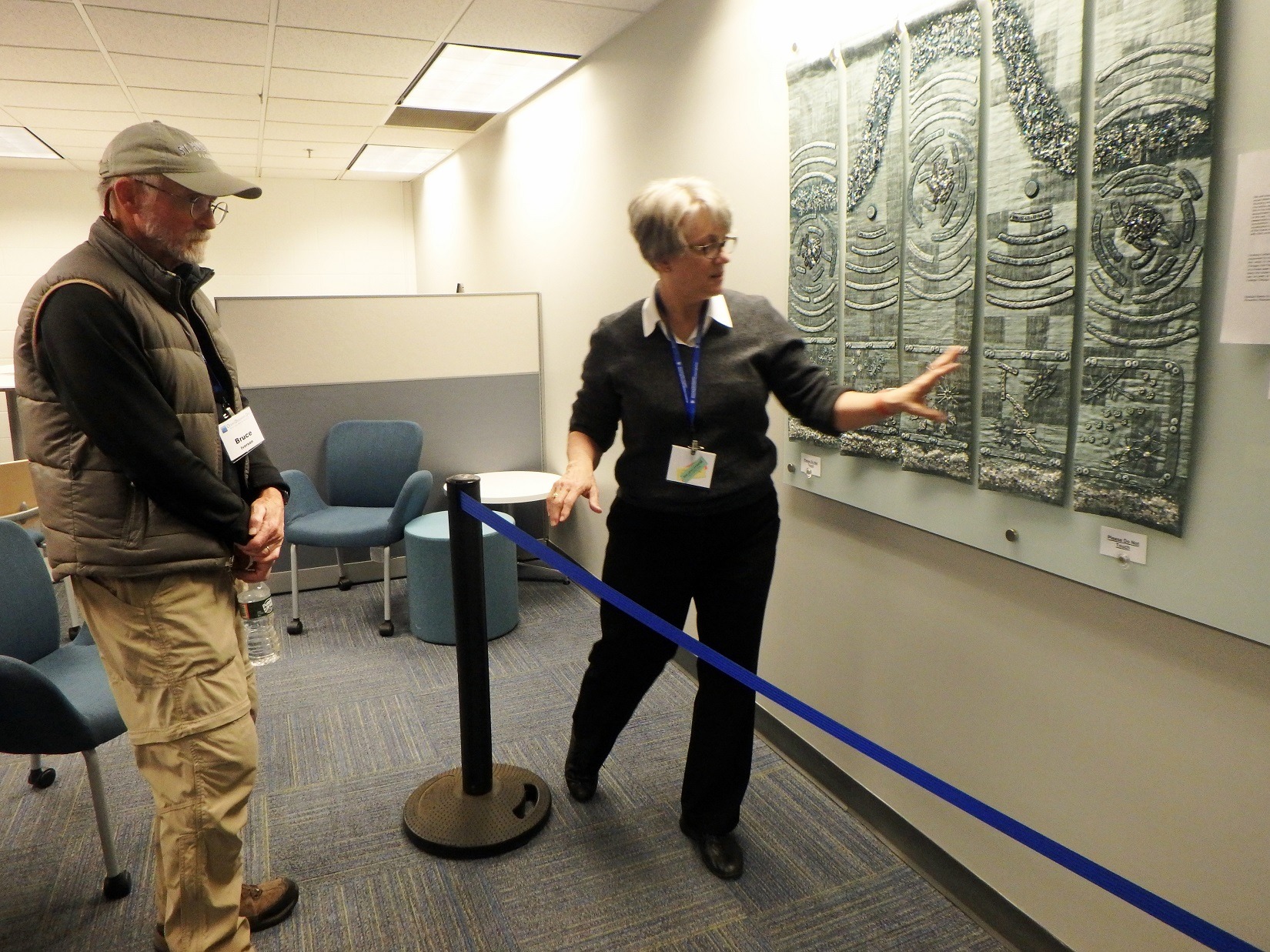
What journey has the piece been on since its creation?
The Art And Science of Sound in The Sea was completed in early September and had its debut at the University of New Hampshire, with Dr Miksis-Olds at the Center for Acoustic Research and Education and for Ocean Discovery Days (https://marine.unh.edu/ocean-discovery-day). This project is going to be shared at other science outreach events, galleries and conferences, too.
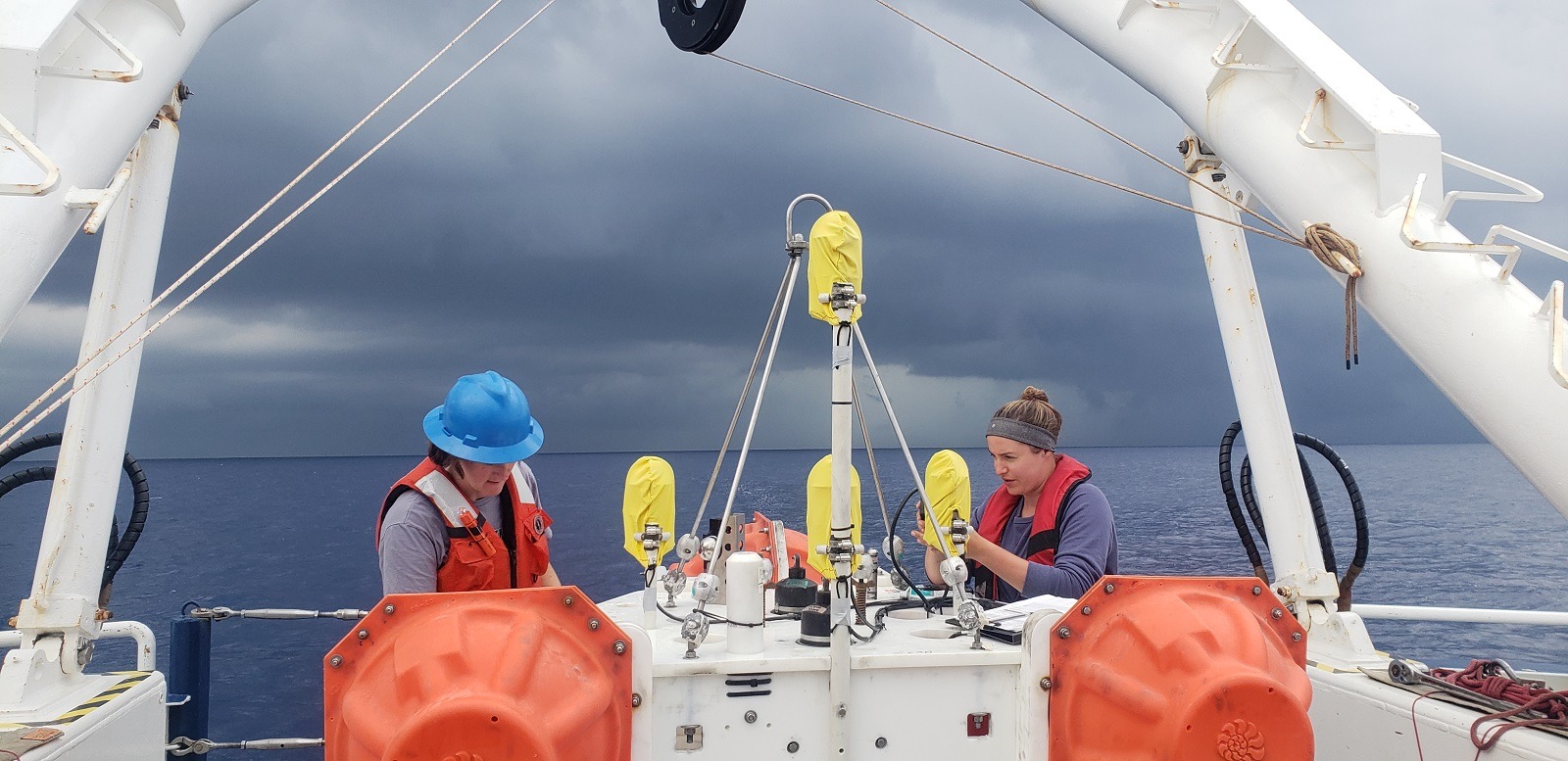
It was Dr Miksis-Olds who provided me with the opportunity to participate in and be inspired by the science conducted aboard the R.V. Endeavor. Special thanks also go to the University of New Hampshire’s Center for Acoustics Research and Education for their support, to the ADEON project for sharing data and to the Art Institute of Chicago Textile Department.
Not only did I have a terrific adventure but was able to incorporate accurate science in my work, combined with inspiration from the renowned embroidery artist Lissy Funk.
Translating concepts about ocean acoustics into textile art offered an important and meaningful intersection for my studio practice. My art celebrates science, informing the public about ocean research. I am so passionate about helping others understand what I have learnt, which is that anyone, no matter what your background is, can be inspired by science.
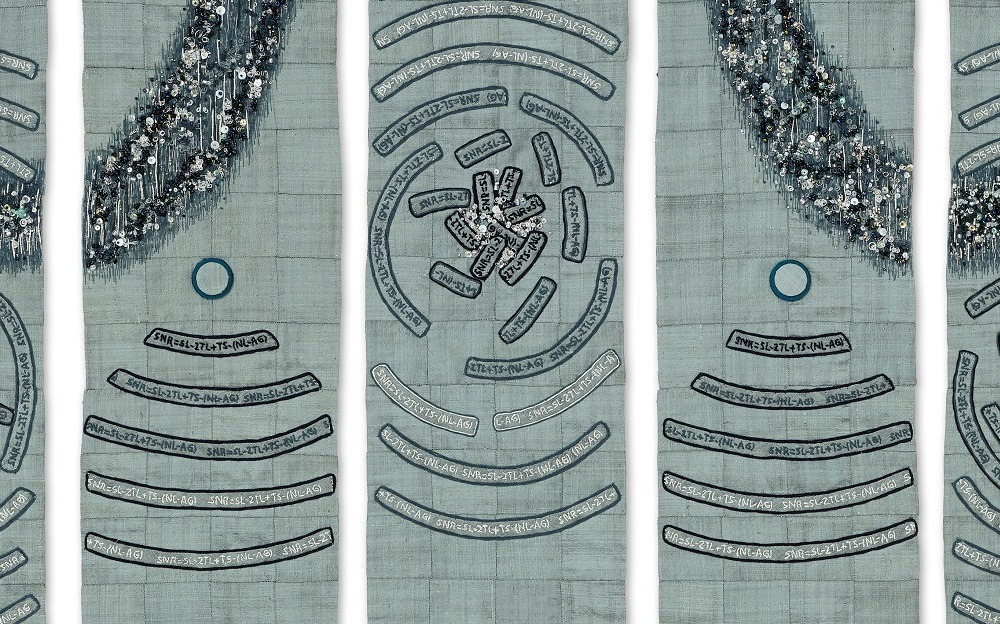
For more information visit LindsayOlsonArt.com
Know any science fans who’d love to see Lindsay Olson’s work? Why not share this article using the buttons below.
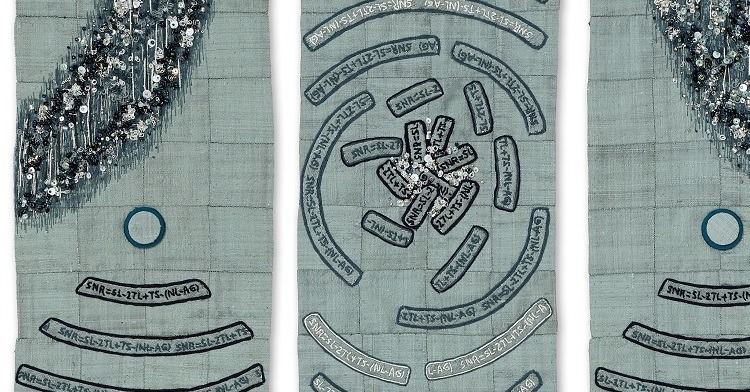
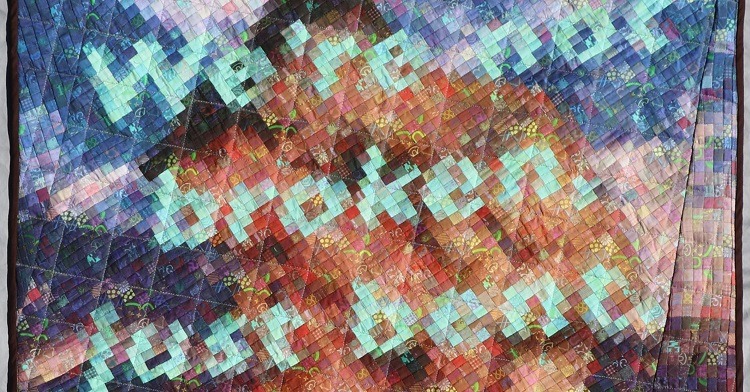
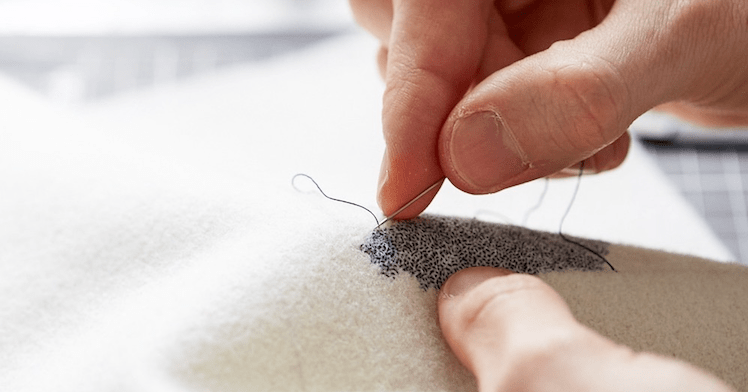
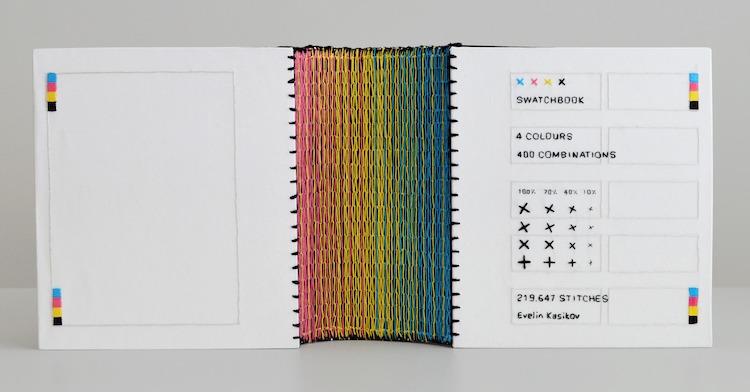
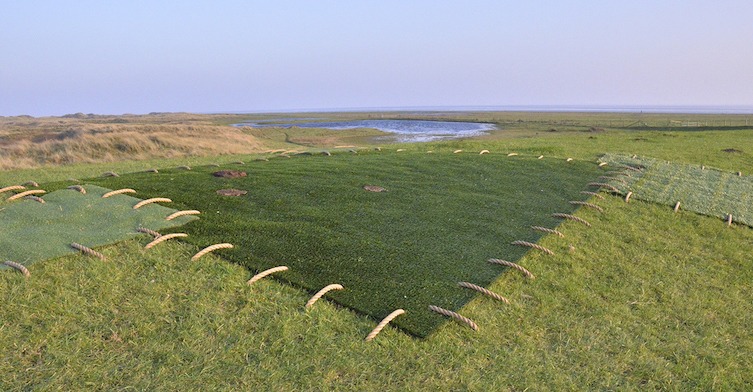
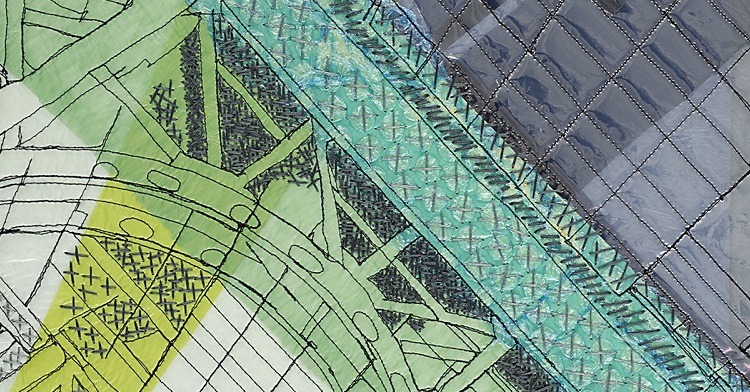
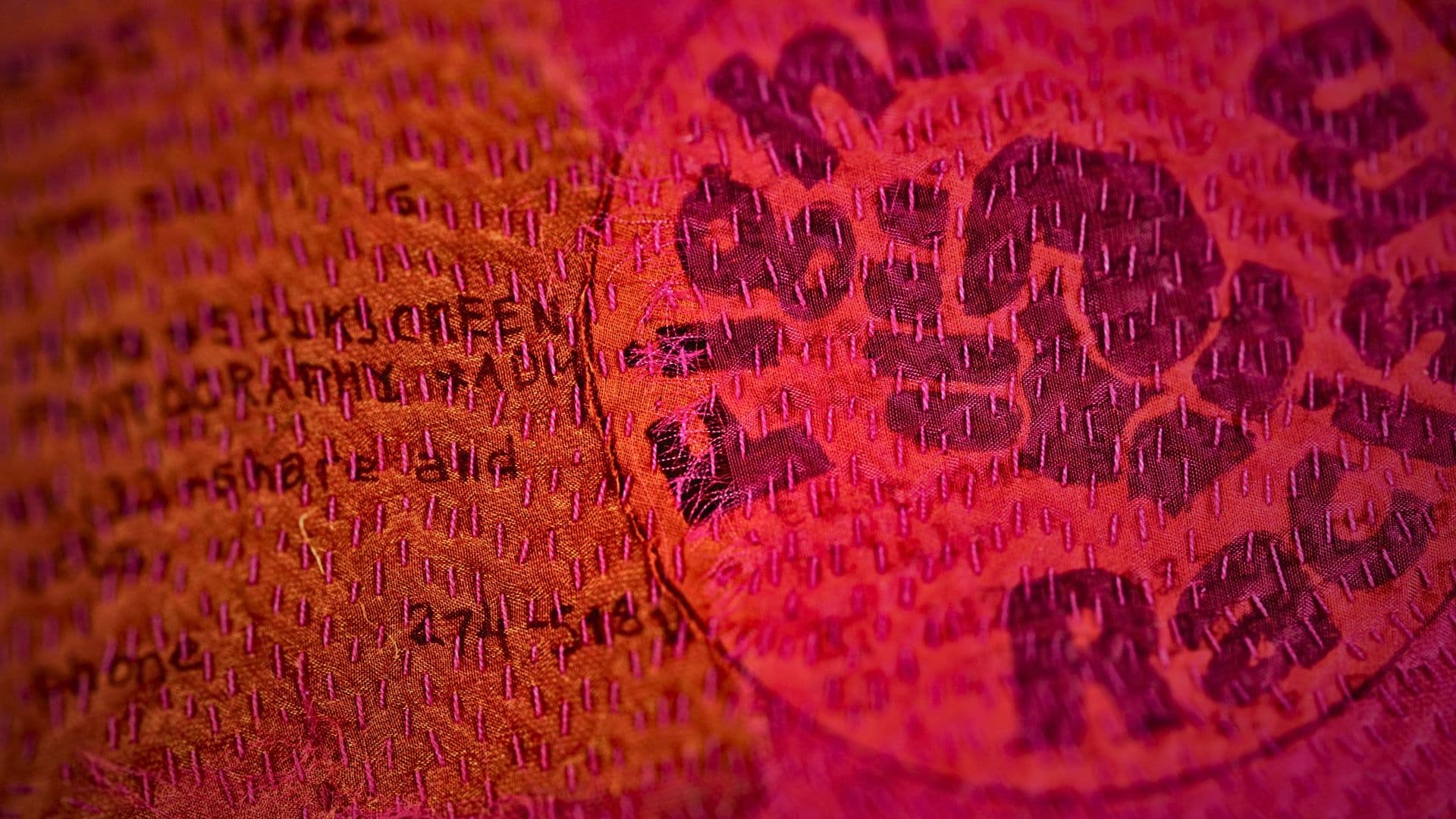
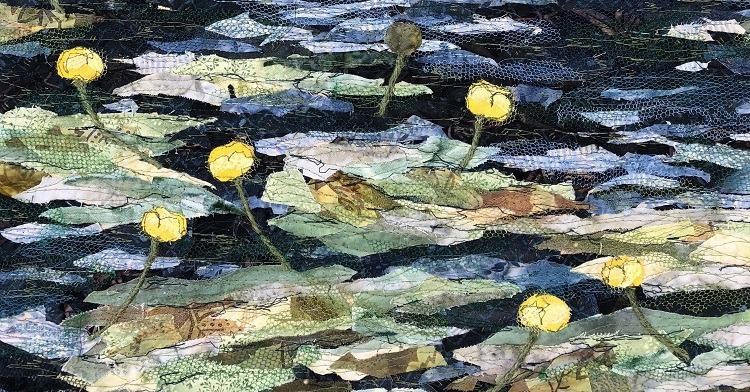
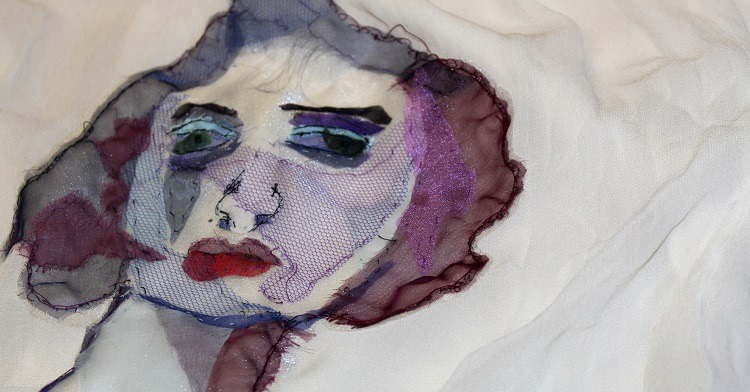
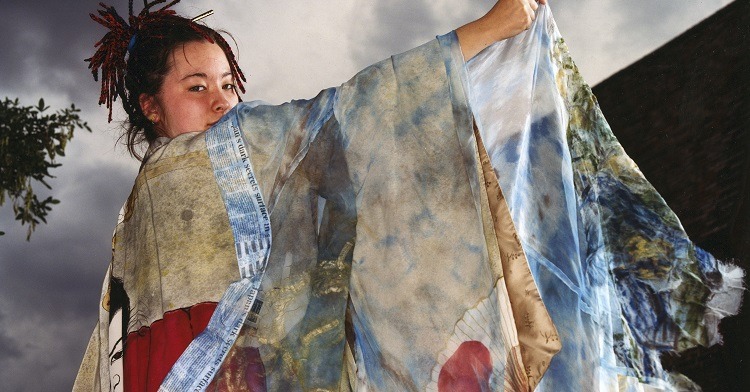
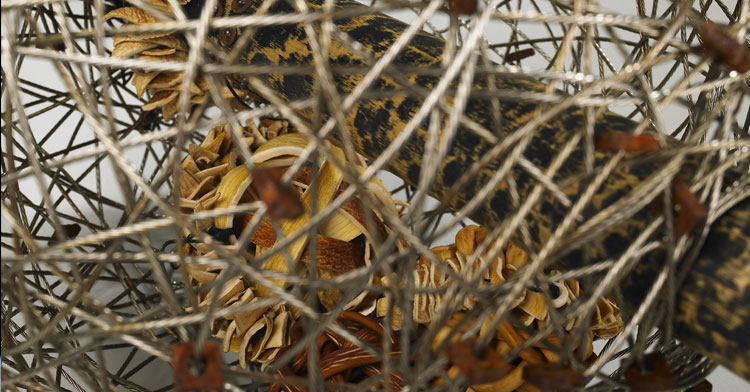
2 comments
Mary Curcetti
Beautiful! I am fascinated with the crossover between Science and Art. This article made perfect reading for those interested in both subjects and appreciate the fine details that complete a body of work like this.
Carol E. Mercer
I am completely transfixed by the expressive creativity of the textile artists. I have threads and have done a smattering of embroidery, felting, sewing and knitting projects over the years. Between raising 3 children and now a grandson who has encouraged me to get back to my sewing etc. God Bless you all and your magnificent minds that produces such wonderful works of art. Thank you for sharing and giving inspiration to us all in these times.